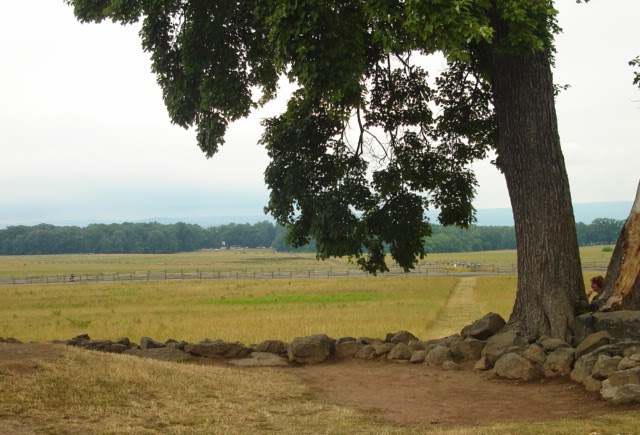“Soon, out of the mist, there loomed high in the air a great, somber,
shadowy form, which grew vaguely distinct as the boat approached, and soon the
well-known figure of the torch-bearing goddess stood revealed in hazy outlines…”
(245).
The Book
 Liberty’s Torch: The Great Adventure to Build The Statue of Liberty is both a biography of the sculptor and the sculpture. Author Elizabeth
Mitchell introduces the reader to the sculptor, Frederic Auguste Bartholdi. The first chapters of the book cover
Bartholdi’s life before he began work on The Statue of Liberty.
Liberty’s Torch: The Great Adventure to Build The Statue of Liberty is both a biography of the sculptor and the sculpture. Author Elizabeth
Mitchell introduces the reader to the sculptor, Frederic Auguste Bartholdi. The first chapters of the book cover
Bartholdi’s life before he began work on The Statue of Liberty.
Bartholdi
first developed the idea for a grand statue in 1865 and originally proposed the
idea to Egypt to commemorate
the Suez Canal. Egypt
turned him down and in 1871, Bartholdi traveled to America to seek approval there. The
next fifteen years were spent fundraising, designing, and building. Mitchell brings the reader into Bartholdi’s
workshop and shows the steps of the construction process. The statue was built
in France, then taken apart
and shipped to America
to be reassembled. On October 28, 1886 The Statue of Liberty was dedicated.
Mitchell
provides insight into The Statue of Liberty that many Americans do not know.
The statue’s official name is “The Statue of Liberty Enlightening the World.”
Made out of 4,000 square feet of copper, the statue was originally red. It
turned completely green about 40 years after it’s dedication. It is widely
thought that the statue was meant to be a gift commemorating the friendship of France and America. However, “[Bartholdi]
wanted to make the largest statue in the world more than he cared to espouse an
ardent political view or lavish praise on America” (105). Ironically, few
people know the name of Bartholdi today.
Liberty’s Torch is well-written and
easy to follow. There are some sections where the author delves into side
stories that provide background about various people involved with the statue.
These side stories are not necessary, but sometimes provide interesting facts
or perspectives. As I read, I wanted to know more about the actual building of
the statue. Mitchell mainly focuses on the conception and fundraising for The
Statue of Liberty. The book would benefit from a closer look at the
construction and engineering hurdles and feats accomplished by the designers
and builders.
The Place
 A visit to
The Statue of Liberty is a one of a kind experience. I have vivid memories of
riding the ferry to Liberty Island, exploring the exhibits in the museum in the
pedestal, climbing up to the crown, and looking out at New York City from the windows in the crown.
A visit to
The Statue of Liberty is a one of a kind experience. I have vivid memories of
riding the ferry to Liberty Island, exploring the exhibits in the museum in the
pedestal, climbing up to the crown, and looking out at New York City from the windows in the crown.
The only way to access
Liberty Island is by ferries operated by
Statue Cruises. Once on the island, there are several options
for visitors to explore. Tickets are required and visitors must go through
security. The pedestal houses the
museum and provides views of the harbor and New York City. In the museum, visitors can
learn about the history of The Statue of Liberty. One fascinating part is a
replica of Liberty’s
head that visitors can stand next to and compare heights.
Of course, the main
attraction is the statue itself. A
climb to the top is well-worth it, but visitors should know what to expect.
There is no elevator in the statue; visitors must climb 146 steps on a double
spiral staircase. The line on the staircase moves slowly because people stop to
look out the windows in the crown. Once at the top, the climb will be rewarded
with beautiful views of New York City
across the harbor. As you look out the windows, you can imagine what it must have been like for the thousands of immigrants arriving in America and glimpsing The Statue of Liberty for the first time.
 American Passage: The History of Ellis Island gives the reader a glimpse into one of the iconic places in American
history. Author Vincent J. Cannato chooses to present a biography of a place,
detailing the birth, growth, and retirement of
American Passage: The History of Ellis Island gives the reader a glimpse into one of the iconic places in American
history. Author Vincent J. Cannato chooses to present a biography of a place,
detailing the birth, growth, and retirement of 














